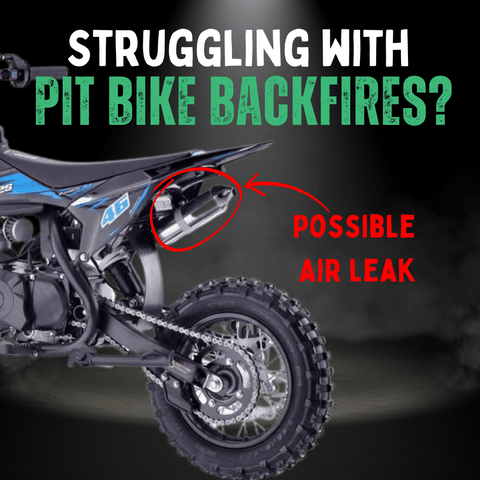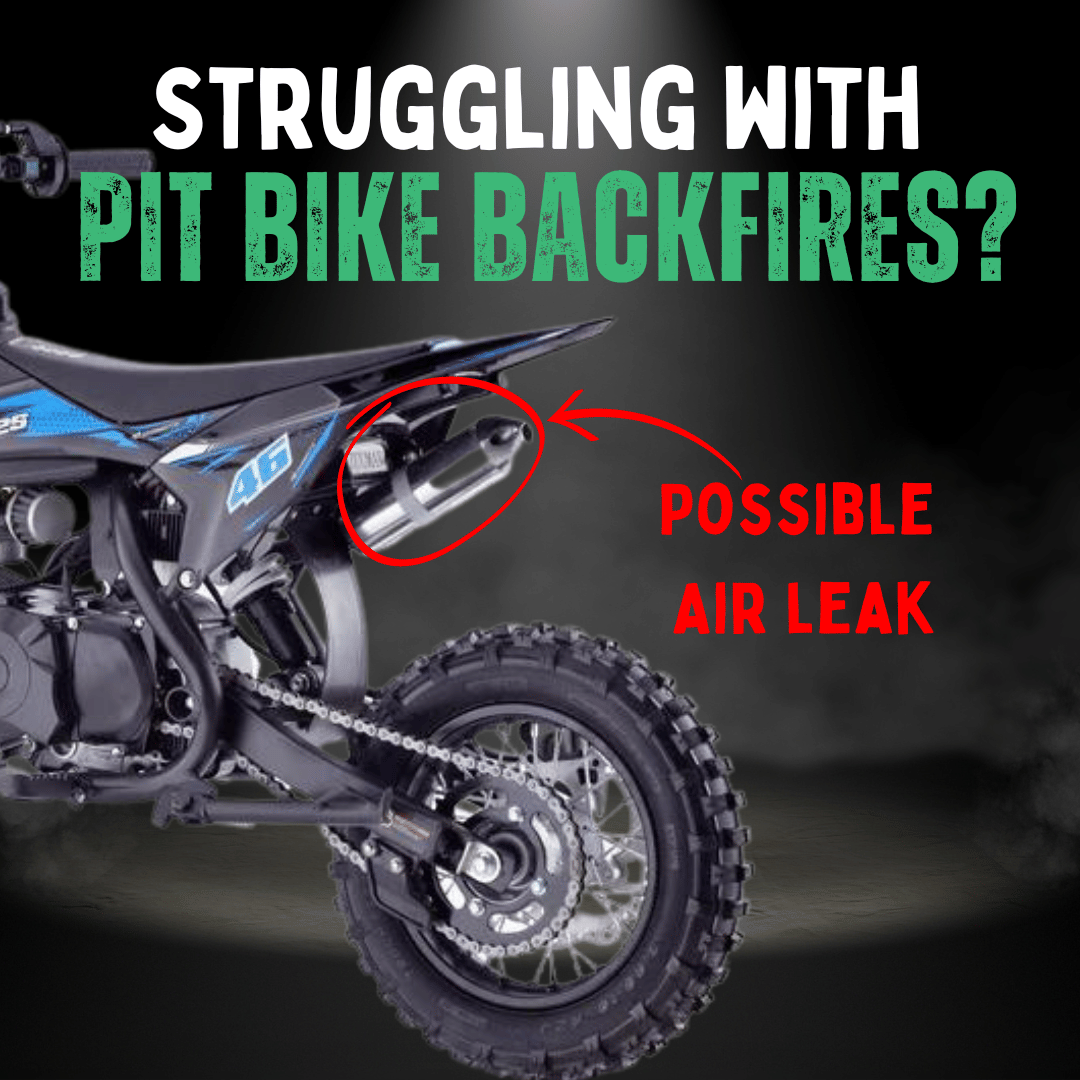
Updated: March 26, 2025
The loud pop of a pit bike backfire can ruin your ride—let’s fix it!
Discover the causes and solutions for a smoother ride in 2025.
Why It Happens: Pit bike backfiring is often due to air leaks, incorrect cam timing, or a weak spark plug, causing an imbalanced air-fuel mixture.
Common Causes of Pit Bike Backfiring
- Air Leak: Disrupts the air-fuel mix, causing incomplete combustion.
- Incorrect Cam Timing: Throws off the engine’s rhythm, leading to misfires.
- Weak Spark Plug: Fails to ignite the fuel properly—spark plug care.
- Clogged Air Filter: Restricts airflow, creating a lean mixture.
- Dirty Carburettor: Messes up the fuel mix—more on backfiring.
Tools You’ll Need
- Spanners/Wrenches: To tighten spark plugs or other components.
- Air Pump: For maintaining tyre and fuel system pressure.
- Cleaning Materials: To clean the carburettor and engine parts.
- Screwdrivers: For general repairs.
- Spark Plug Tester: To check spark plug performance.
Fixing Pit Bike Backfiring
- Air Leaks: Spray soapy water to find bubbles, then seal or replace the part.
- Cam Timing: Check the manual and adjust to the correct position.
- Spark Plugs: Test with a spark plug tester; tighten or replace if faulty.
- Air Filter: Clean if reusable or replace if clogged.
- Carburettor: Remove, clean with carb cleaner, and reinstall securely.
Get your pit bike running smoothly with these steps!
Preventing Future Backfires
- Weekly: Check spark plugs and clean the air filter.
- Monthly: Inspect the carburettor and air-fuel mixture.
- Quarterly: Clean the carburettor and check the exhaust for leaks.
Safety Tips for DIY Fixes
- Disconnect the Battery: Avoid electrical hazards.
- Wear Gloves and Eye Protection: Protect against fuel residues.
- Ventilate: Ensure good airflow while working.
Costs to Consider
- Parts: Spark plugs, air filters, or carburettors cost £5-£50.
- Professional Help: Mechanics may charge £20-£100 per hour if needed.
Conclusion
Backfiring in your pit bike in 2025 can stem from air leaks, cam timing issues, or a dirty carburettor.
With the right tools and regular maintenance, you can fix it and enjoy a safer, smoother ride!
FAQs
What other signs show my pit bike needs maintenance?
Besides backfiring, look for inconsistent idling, frequent stalling, or reduced engine performance—pit bike speed guide.
How often should I check spark plugs to prevent backfiring?
Every 20-30 hours of engine use to catch wear early—2 vs. 4-stroke bikes.
Can bad fuel cause backfiring?
Yes, low-quality or contaminated fuel disrupts combustion, leading to backfires—140cc pit bike tips.
Is it safe to ride a backfiring pit bike?
No, persistent backfiring signals issues that can affect safety—fix it first—UK street legality.
Ready to Ride? 🚀
Loved “Struggling with Pit Bike Backfires? Here’s Your FIX!” Want more biking tips?
Visit RiiRoo.com or chat live with us for ride-on fun!






Share:
10 CRUCIAL Facts About Motorcycle Helmets YOU Need to Know
8 SIMPLE Steps to the Ultimate Motorcycle Visor Upgrade